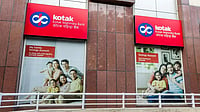As the Silicon Valley Bank (SVB) crisis sends panic waves across the US banking sector, pulling along other banks in its mayhem, it has come to light that ratings agency Moody’s had given the lender an ‘A’ rating prior to its collapse. After the failure of SVB made news, Moody’s subsequently downgraded the start-up lender and pushed it to ‘junk’ category, indicative of the bank’s extremely poor financial health.
In addition to the top rating, it also became known that KPMG signed off on the now-beleaguered bank’s audit just 14 days before it went bust. Notably, KPMG was also the auditor for Signature Bank, another US bank that collapsed in the aftermath of the SVB crisis, and it gave the lender a clean report just 11 days before it went belly up.
Although the recent rating and audit debacles may come under scrutiny from authorities later on, it also poses a critical question for investors who place their trust on reports from auditors and credit ratings agencies (CRAs). If such ratings, formulated by experts after detailed study, can supposedly miss details about a company’s impending failure, then how can investors gauge the financial health of their investment instruments? This recent oversight will now join a long list of misreadings made by analysts that have led investors to losing their hard-earned money in companies that went bankrupt.
Echoes Of The 2008 Financial Crisis
The crisis triggered by SVB’s fall, although much smaller in scale when compared to the 2008 crisis, does share some similarities with the 15-year-old event that had rocked the global financial world. One such common feature is the failure of CRAs in identifying impending debacles. Lehman Brothers, the infamous poster child of the 2008 subprime mortgage crisis, was given an ‘A’ credit rating by S&P's rating agency just six days before its collapse. The confidence bestowed on Lehman Brothers turned out to be misguided as the bank filed the largest bankruptcy filing in US history soon after.
Many have bluntly placed the blame of the 2008 financial fallout on ratings agencies whose actions allowed for the trading of poor-quality instruments. In fact, the Financial Crisis Inquiry Commission that looked into the fallout from 2008 surmised in a 2011 report that the “crisis could not have happened without the 'Big Three' agencies—Moody's Investors Service, Standard & Poor's and Fitch Ratings”. The commission further found out that “investment banks paid handsome fees to the rating agencies to obtain the desired ratings”.
For its contribution to the mortgage securities fraud, by means of inflated ratings, Moody’s had to agree to pay $864 million as settlement dues. This shows that the actions of ratings agencies can often be misleading for investors, at times even deliberately, when it comes to stability of financial instruments. This has many a time led to hefty losses for investors.
Even after 2008, there have been multiple instances of ratings agencies failing to capture the danger lurking in the financials of some important companies. Closer to home, this includes infamous cases like DHFL, Reliance Communications and IL&FS as well.
Indian Examples Of Ratings Oversight
In India, ratings agencies have been caught in the middle of a storm, at times, when they cut corners and provide ratings to companies that are not genuine reflections of the company’s financials and its repayment abilities. Last year, Brickwork Ratings India was even asked by market regulator Securities and Exchange Board of India (SEBI) to shut shop in India after the agency allegedly violated some guidelines.
In 2019, SEBI had pulled up ratings agencies for several lapses that were made in rating Infrastructure Leasing and Financial Services Ltd (IL&FS). These oversights only became evident after IL&FS defaulted on its payment. The sudden downgrading of IL&FS from the highest rating of ‘AAA’ to being relegated as ‘junk’ showed how the agencies had missed key details in their earlier ratings. SEBI even levied fines from these agencies for their lapses.
Even in the case of DHFL and Zee group, CRAs were apparently in the dark of the companies’ impending defaults, resulting in situations where ratings suddenly dropped from healthy, investment-grade levels directly to default or junk categories. Here, the question arises whether it is possible for instruments of supposedly high credit worthiness to become junk overnight. The far more likely explanation is that the CRAs missed details of critical importance when they were doling out top ratings in the first place.
In India’s case, SEBI is working towards implementing tighter regulations around CRAs to ensure that critical information is not missed in the process of issuing ratings. At the same time, it is probably best for investors and other stakeholders alike, if credit ratings are taken with a pinch of salt. These ratings should be viewed as just one way of looking at a company's financial health and should not be seen as investment ideas in itself. As recent, and old, incidents have shown, investors who solely rely on ratings agencies are destined to burn their fingers.






























